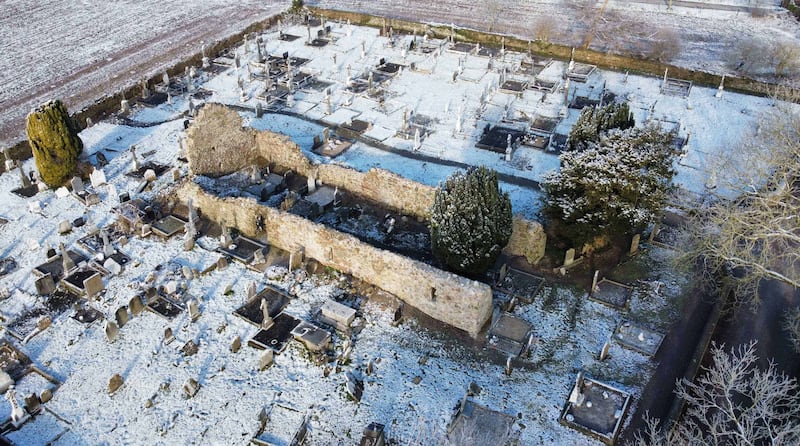The walls of Dromtarriffe Church may not be able to talk but almost four centuries after it was destroyed by Oliver Cromwell’s forces, with the loss of 24 people who perished there while seeking sanctuary, its story is being told again thanks to conservation work by Cork County Council.
Located in the Barony of Duhallow in northwest Cork, Dromtarriffe is the most easterly parish in the Diocese of Kerry. The fine-stone church there was built in medieval times and used as a place of work until July 1651, when it was attacked by Cromwellian soldiers.
According to the Diocese of Kerry history of Dromtarriffe parish, the church was burnt by Cromwell’s forces under the command of an officer known as the Butcher Maxwell as he pursued Catholic troops belonging to Lord Muskerry, who were fleeing after their defeat at the nearby Battle of Knockbrack, which is also known as the Battle of Knocknaclashy.
“The Battle of Knockbrack was the last major battle of the Civil War. By the summer of 1651, the Cromwellians had captured all fortified towns, except Limerick. Limerick was under siege from an army that had marched down through Connacht as well as from an army on the Southern side,” reads the Diocese of Kerry history.
RM Block
“Lord Muskerry, Donagh McCarthy, the chief of the McCarthys, raised an army in Kerry and was marching it up to relieve Limerick when he was met by a Parliamentary force led by Lord Broghill, Roger Boyle. Broghill interposed his force between McCarthy’s force and Limerick.
“After much manoeuvring, the Battle was fought at Knockbrack. Muskerry had 1,000 Horse and 2,000 Infantry. Broghill had 400 Horse [sic] and 600 Infantry, but Broghill’s troops were battle-hardened, and had a strong conviction that they could not be defeated as they were agents of the will of God. "
The Battle of Knockbrack was an important engagement of the English civil war in Ireland and, according to Brendan Clifford of the Aubane Historical Society, Lord Muskerry lost 400 men while 120 Parliamentarians were killed.

According to the Diocese of Kerry website, Lord Muskerry’s forces comprised his own mercenaries and various clans from around Duhallow – the McAuliffes, the O’Callaghans and the O’Keeffes –, and, as they fled westward, they were pursued by the Cromwellian forces.
St Mary Frances Cusack in her 1875 History of the City and County of Cork wrote: “A terrible bloody slaughter was effected near Dromagh, where the Irish had fought with surpassing bravery. The inhuman command was given to kill all, and the order was executed with the usual barbarity.”
The church had a thatched roof so it caught fire easily. Following the fire it fell into disrepair and, with no permission given by the authorities to build a replacement, locals attended Mass at Daly’s Mountain Field, with priests compelled to say Mass clandestinely during the Penal Times.
Now almost 400 years after the destruction, the ruins of Dromtarriffe Church have been uncovered and cleared of undergrowth and conserved by Cork County Council with assistance from the Department of Housing, Local Government and Heritage’s Community Monuments Fund.
[ New book series on Cromwell sheds light on the brutality of his Irish campaignOpens in new window ]
Mayor of the County of Cork, Cllr Danny Collins praised all those involved in the project, which was overseen by Cork County Council’s Heritage Unit and has resulted in the restoration of the remaining structures, thereby, said Cllr Collins, “safeguarding this important historic structure into the future.”
“I would like to commend the entire team who worked so diligently to safeguard this historic site, securing its future for the benefit of the local community, visitors to the area and history enthusiasts even further afield,” said Cllr Collins.
Chief executive of Cork County Council Tim Lucey said the Community Monuments Fund has been in operation for three years, during which it has funded many conservation and maintenance projects to protect and promote archaeological monuments across Cork.
“I would encourage communities who wish to carry out works to conserve, maintain and safeguard local monuments and historic sites such as Dromtarriffe to consider an application to this year’s fund,” he said.





















